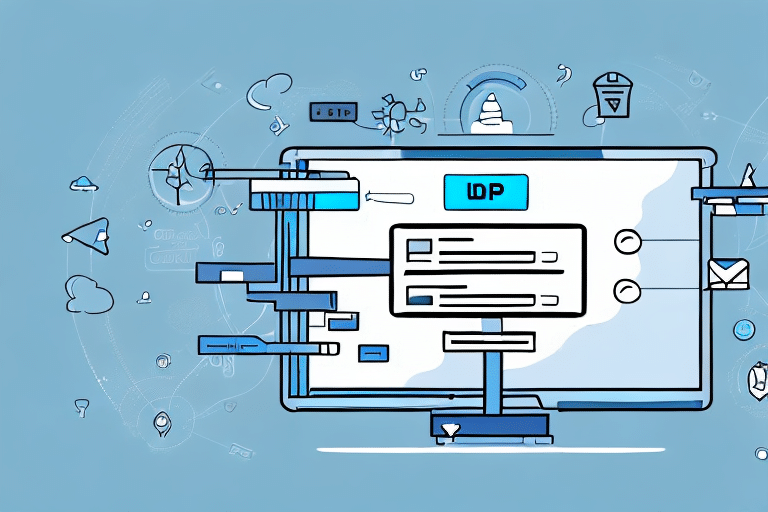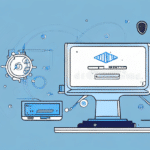Optimizing UPS Worldship by Changing Your Remote Database
Managing your shipping operations efficiently is crucial for any business, and UPS Worldship offers robust tools to streamline this process. However, there may come a time when you need to change the remote database used by UPS Worldship. Whether you're migrating to a new server, transitioning to the cloud, or addressing performance issues, updating your remote database can enhance your system's reliability and efficiency. This guide provides a comprehensive overview of why and how to change your remote database in UPS Worldship, ensuring a smooth and optimized transition.
Reasons for Changing Your Remote Database
1. Server Migration or Cloud Transition
Businesses often migrate their operations to new servers or adopt cloud-based solutions to leverage scalability and flexibility. Transitioning to a new environment typically necessitates pointing UPS Worldship to a new database to maintain seamless operations. According to a Gartner report, cloud migration can lead to a 19% increase in operational efficiency.
2. Performance Enhancements
If you're experiencing slow performance or functionality issues with your current database setup, switching to a more robust database provider or reconfiguring your existing one can resolve these problems. Enhanced performance can lead to faster data processing and improved user experience, which are critical for maintaining productivity.
3. Compliance with Data Privacy Regulations
With evolving data privacy laws like the General Data Protection Regulation (GDPR), ensuring that your database provider complies with these regulations is essential. Non-compliance can result in hefty fines and legal challenges. By switching to a compliant provider, you safeguard your business against potential legal issues.
Understanding the Role of a Remote Database in UPS Worldship
Data Storage and Accessibility
UPS Worldship relies on a remote database to store vital information such as customer details, package information, and delivery status. This database can either be hosted on-premises or on a remote server accessible via the internet. Utilizing a remote database allows multiple users to access and update information concurrently, which is particularly beneficial for businesses with distributed teams.
Backup and Recovery
A remote database serves as a secure backup for your shipping data. In case of hardware failures or other technical issues, your data remains safe and can be easily restored from the remote server, minimizing downtime and data loss.
Preparing to Change Your Remote Database
1. Backup Your Current Database
Before initiating any changes, ensure you have a complete backup of your existing database. This precaution allows you to revert to the previous state if any issues arise during the transition.
2. Evaluate Database Options
Consult with your IT team or service provider to explore available database options. Consider factors such as cost, performance, scalability, and compliance with industry standards. Refer to resources like the Database Trends and Applications report for up-to-date insights.
3. Communicate with Stakeholders
Inform all relevant stakeholders about the planned database change. Provide necessary details like new connection information and any potential impacts on daily operations to ensure a smooth transition.
Steps to Change Your Remote Database in UPS Worldship
1. Install and Configure the New Database
Select a database provider that meets your business requirements. The installation process typically involves setting up a new database, configuring user accounts and permissions, and adjusting network settings to enable remote access. For detailed instructions, refer to the provider’s official documentation.
2. Update UPS Worldship Settings
Access the UPS Worldship configuration settings and update the database connection details to point to the new remote database. Ensure that the connection strings are correctly formatted and that UPS Worldship has the necessary permissions to interact with the new database.
3. Test the New Configuration
Before fully switching over, conduct thorough testing to verify that UPS Worldship can successfully communicate with the new database. Check for data integrity, accessibility, and performance to ensure that the system functions as expected.
Troubleshooting Common Issues
Connection Problems
If you encounter difficulties connecting to the new database, verify that remote connections are enabled and that firewall settings permit the necessary traffic. Additionally, ensure that the network configurations align with your database provider’s requirements.
Performance Slowdowns
Optimize your database by performing regular maintenance tasks such as indexing, cleaning up redundant data, and running performance checks. Tools like Oracle Performance Tuning can aid in identifying and resolving bottlenecks.
Data Loss Prevention
Always maintain a backup before making changes. After migration, validate that all data has been accurately transferred to the new database. Utilize automated backup solutions to prevent accidental data loss.
Maintaining Your Remote Database for Optimal Performance
Regular Backups and Monitoring
Implement a routine backup schedule to safeguard your data. Additionally, use monitoring tools to track database performance and quickly address any emerging issues. Services like AWS CloudWatch offer comprehensive monitoring solutions.
Data Integrity and Security
Ensure data integrity by conducting regular audits and integrity checks. Employ strong security measures, including encryption, access controls, and vulnerability assessments, to protect your data from unauthorized access and cyber threats.
Disaster Recovery Planning
Develop a disaster recovery plan that outlines steps to restore your database in case of unforeseen events. This plan should include regular backups, offsite storage, and clear procedures for data restoration.
Choosing the Right Remote Database for Your Business
Assessing Your Needs
Consider factors such as the size of your business, data volume, budget, and specific operational requirements. Cloud-based databases like Azure SQL Database offer scalability and ease of management, while on-premise solutions like Oracle Database provide greater control over data security and customization.
Comparing Database Options
Evaluate the pros and cons of different database types, including relational databases (e.g., MySQL, PostgreSQL) and NoSQL databases (e.g., MongoDB). Consider their compatibility with UPS Worldship and how well they align with your business goals.
Expert Consultation
Consult with database experts or IT professionals to gain insights into the best database solutions for your specific needs. Their expertise can help you make informed decisions and avoid potential pitfalls.
Securing Your Remote Database
Implementing Robust Security Measures
Protect your remote database by implementing strong security protocols. Use complex passwords, enable encryption for data at rest and in transit, and configure firewalls to restrict unauthorized access.
Regular Security Audits
Conduct regular security audits to identify and address vulnerabilities. Utilize security tools and services that provide continuous monitoring and threat detection to maintain a secure database environment.
Conclusion
Changing the remote database in UPS Worldship is a strategic move that can significantly enhance your shipping operations' efficiency, security, and scalability. By carefully planning the transition, selecting the right database provider, and adhering to best practices for maintenance and security, you can ensure a seamless and optimized database migration. Stay proactive in monitoring and maintaining your database to support your business's evolving needs and regulatory requirements.






















